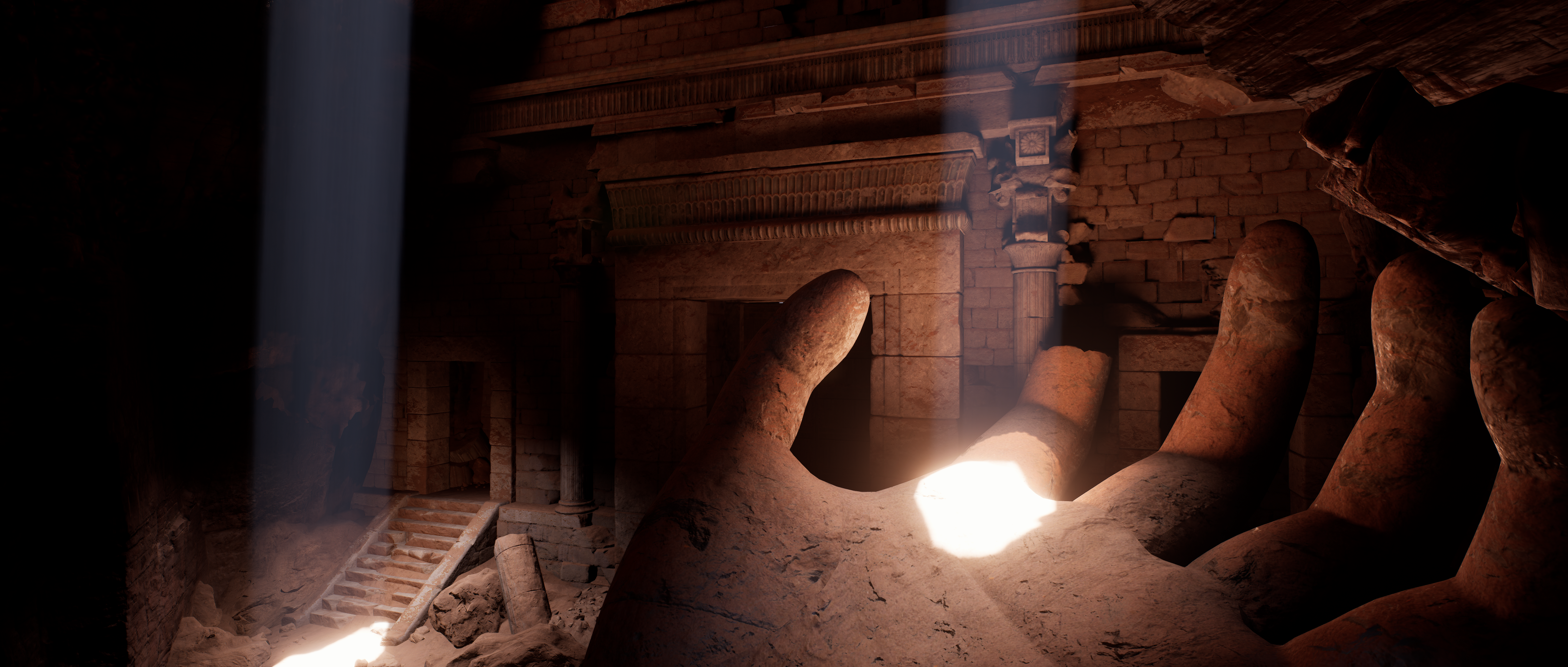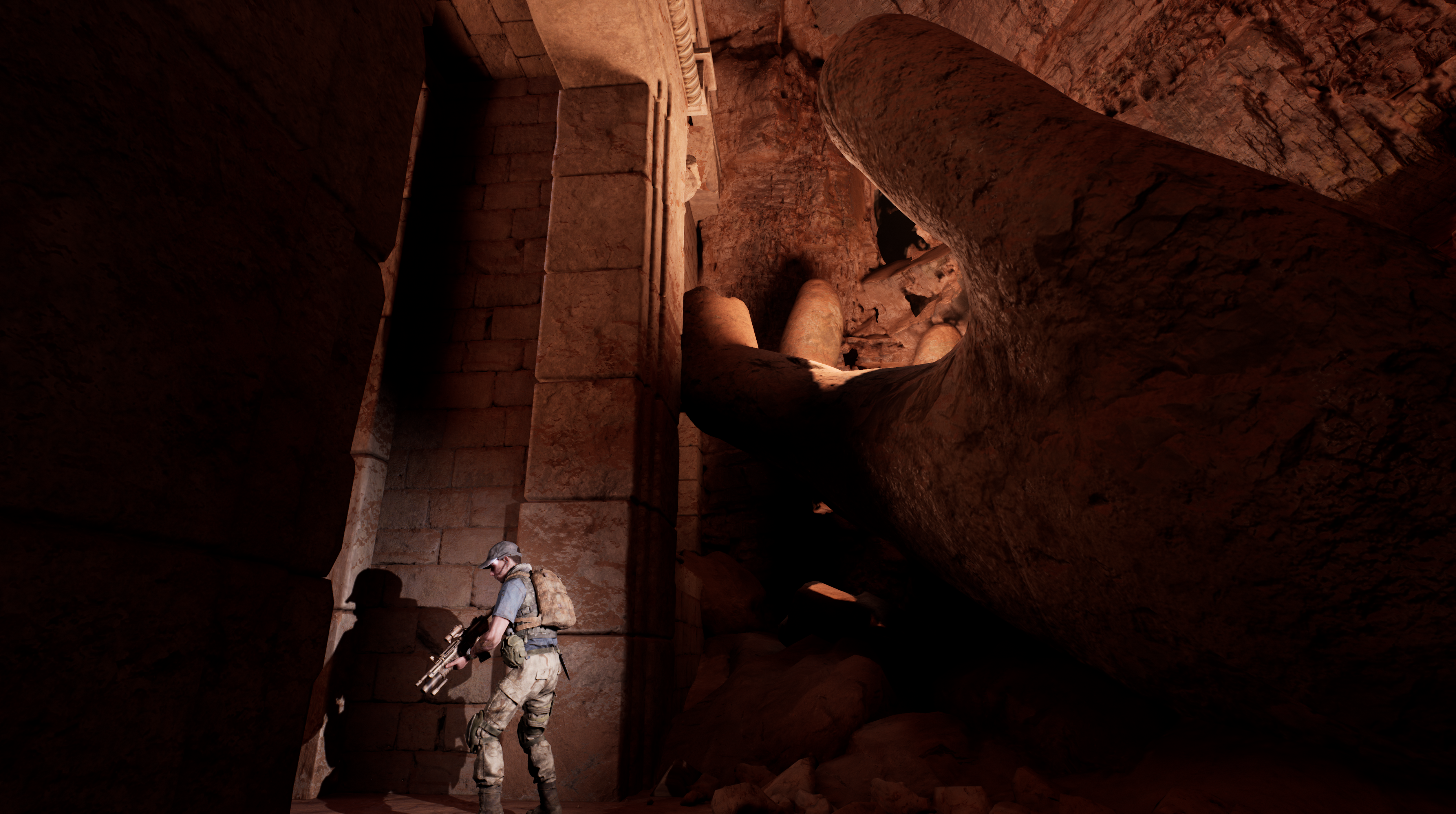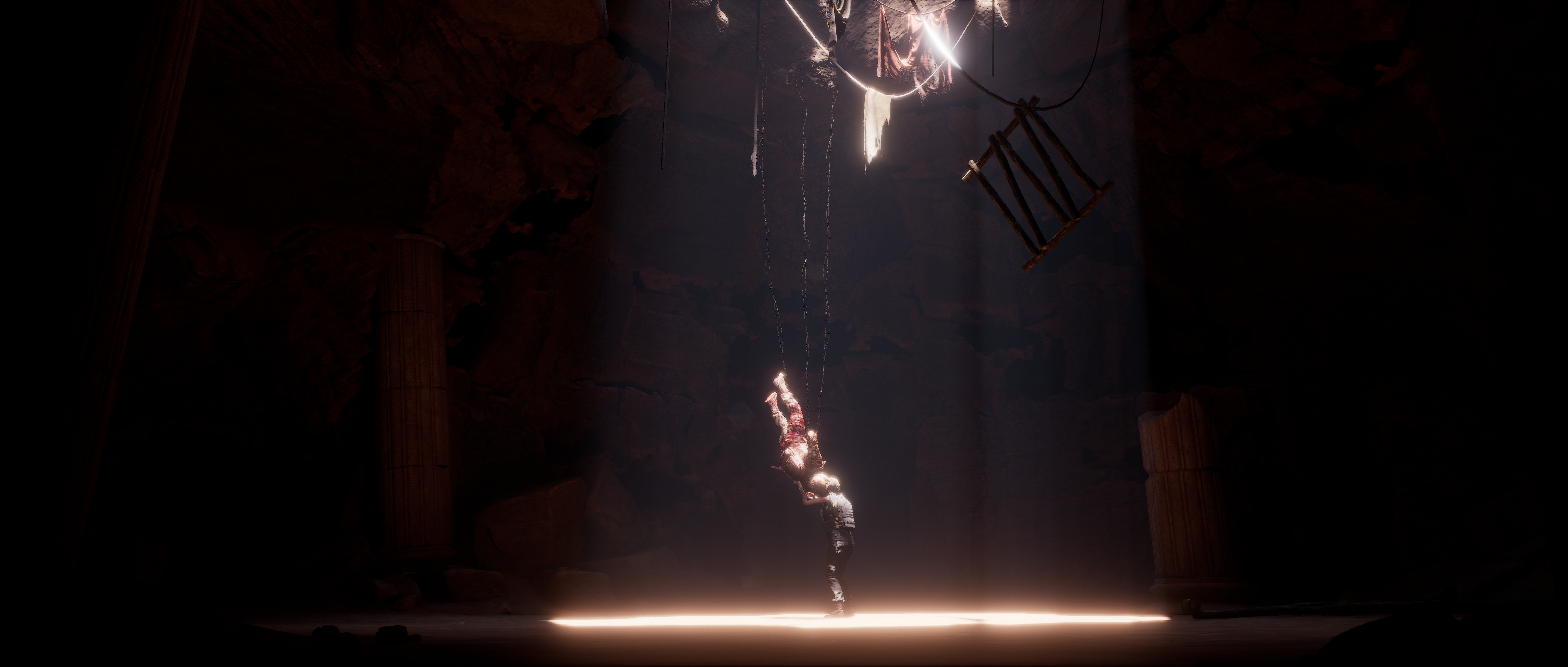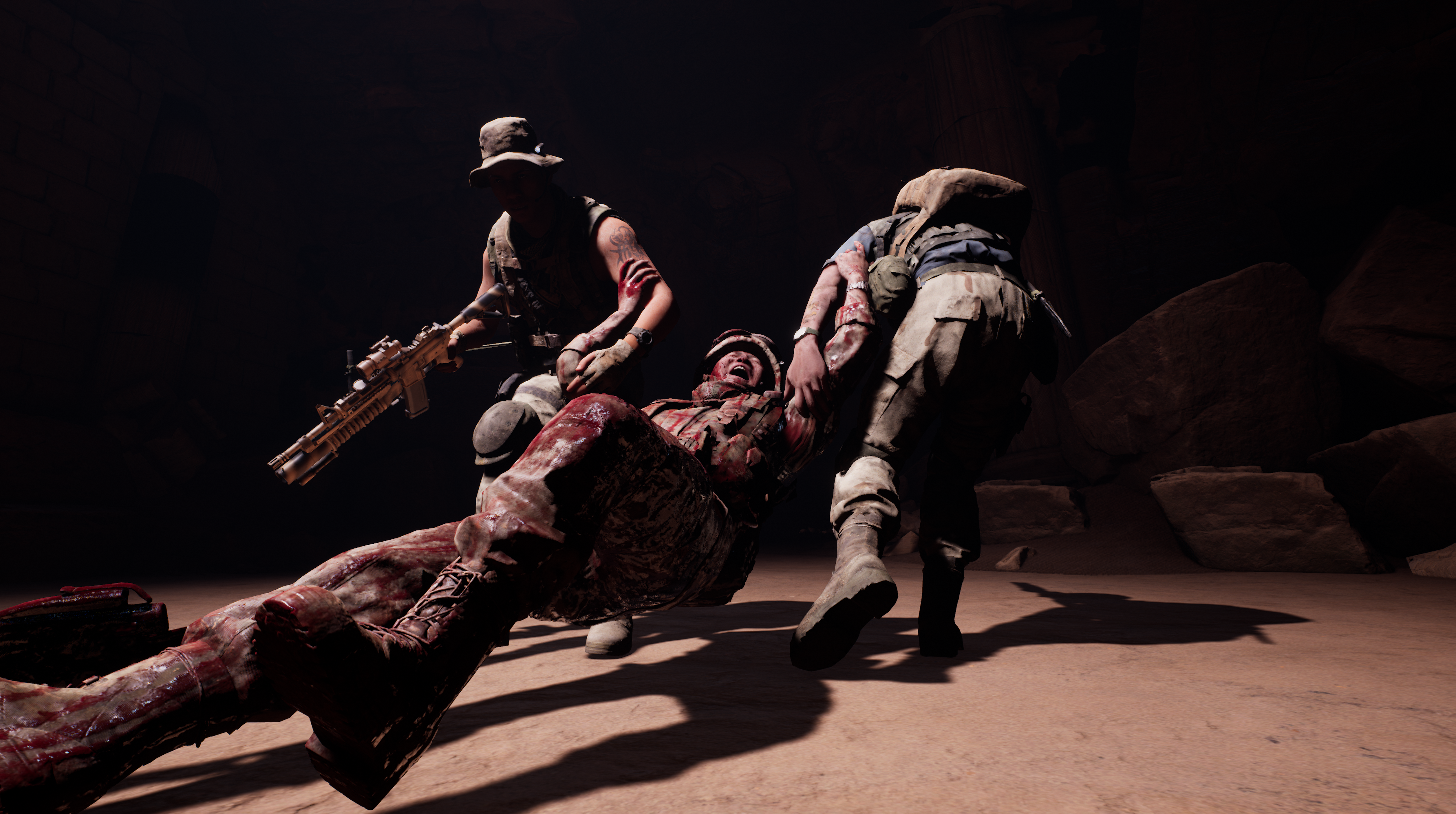The Dark Pictures Anthology is so unsettling because it isn’t defined by a single aspect of horror. Until Dawn inspired its narrative-driven formula, and was a terrifying mixture of classical genre tropes and purposefully awful character writing that wasn’t afraid to lean into archetypes, especially when Supermassive Games would subvert them at the most opportune moment. Man of Medan was a skin-crawling exploration of beloved ghost stories, while Little Hope provided a gruesome examination of witch mythology that pulled no punches. Now, the anthology continues with its third entry – House of Ashes.
Taking inspiration from horror classics such as The Descent, Aliens, Predator, and The Exorcist, it follows Ashley Tisdale’s character and a group of other military personnel as they seek to uncover weapons of mass destruction in Iraq. The year is 2003, and the unpredictable thriller aims to explore political tensions of the era as American and Iraqi soldiers find themselves trapped in ancient underground ruins. As you’d expect, our conventionally attractive heroes aren’t alone, and must fight for their lives to survive.
Much like its predecessors, House of Ashes is designed to be absorbed like a conventional horror film. Set to last a handful of hours, players will be forced to make split-second decisions that decide how the narrative unfolds and who lives and who dies. It’s tense, relentless survival horror in its purest form, and is carrying enough starpower to keep casual newcomers and hardened veterans alike invested. I sadly wasn’t able to play the game as part of a recent preview event, but I was able to learn exactly what it’s all about and what we can expect when venturing into the fabled ruins of Akkad later this year.
The premise is simple: Ashley Tisdale’s Rachel King and a group of American soldiers are tasked with uncovering deadly weapons as the Iraq War is taking place. Much like in reality, their search turns up nothing, but when the time comes to disperse, an attack breaks out. People on both sides are thrown into harm’s way, and all seems lost until the ground beneath them begins to crumble, and they’re pulled into an ancient Sumerian temple that is hiding all manner of unwelcome secrets. Trapped in the darkness, you take control of multiple different characters from each side of the conflict as they try to survive. The goal is to help one another and make it out alive, putting aside ingrained prejudices in favour of fighting the uncertain monsters that await in the shadows.
However, unlike previous entries in this anthology, the characters you control are trained, capable of wielding deadly firearms against this unknown threat. Supermassive tells me that House of Ashes will have moments where defending yourself is possible, but the focus is always on running away, finding brief moments of safety as the horrors relentlessly hunt you down. The demo makes effective use of darkness, with players able to shine a rifle-mounted flashlight around the grandiose caverns in search of escape. While you might find something useful, there’s also a chance your light source will attract something rather unsightly.
It sounds like an excellent balance, forcing you to interact with environments that frighten you the most because there’s simply no other route forward. Darkness is terrifying to everyone, but only if the right context is applied to its existence. If I’m in my bedroom and it’s dark I won’t care in the slightest, but if I’m alone in the woods and it’s completely silent, I’m on the right track to having a panic attack. House of Ashes always emphasises this element of danger, your training as a military expert utterly irrelevant when the enemy is unlike anything you’ve faced before.
I don’t even know what the monsters are yet, only provided with brief glimpses of sharp claws, grotesque, overlong limbs, and sharp growls penetrating the spacious underground caverns. Despite this, it’s more than enough to unsettle you. The Dark Pictures has done an excellent job at making you feel trapped, knowing there’s no chance of safety unless you’re willing to engage with the horrors that await. Games like this that make even exploring the space around you a tense delight are the best, something that recent juggernauts like Resident Evil Village have failed to capitalise upon.
Here, I can feel the fear through the screen, even if it might be short-lived and drenched in jumpscares. It’s effective, and for the atmosphere it’s going for, it’s more than enough. One early sequence in the demo has two characters pulling a third from a tangle of sharp bloody wires suspended in the air. Tearing him away from the debris results in a bloody mixture of screams and squirms as we try desperately to tend to his wounds. You’re tasked with covering his mouth, ensuring he remains quiet as foreign monsters stir in the darkness, trying to locate the source of the noise and put us down for good. If you apply too much pressure to his mouth, he’ll die, unable to cope with the mixture of pain, shock, and lack of oxygen to keep fighting.
It’s a bleak moment, and a profound example of your own decisions having huge consequences. As we manage to escape, our friend’s corpse is dragged into the dark never to be seen again. House of Ashes also plays with the problematic nature of military superiority. In some cases, your character will outrank others, so you can brush away their ideas in favour of your own selfish approach, and consider all of the options regardless of where they sit in the wider power structure. Supermassive hasn’t played with this dynamic before, with many of its previous games focusing on dipshit teenagers and horror cliches that indulge in the practice of oblivious young adults stumbling towards their demise.
I much prefer the approach taken by House of Ashes. It gives each character more depth, and has far more potential for bleak, sympathetic moments that aren’t possible when controlling a dopey college student with rich parents. Depth can certainly be found in the latter by subverting genre cliches, but by moving away from this realm entirely, Supermassive is breaking the mould, and it’s wonderful to see. It will be fascinating to see how it delves into the region’s history of folklore and politics to unveil the threat that awaits in the night, since from what I’ve seen thus far, it could either stick the landing in spectacular fashion or collapse into a heap of convolution. Monsters are strongest when they’re seldom seen, so when the light is finally shone upon them, much of the creepy mystique fades away. Until Dawn made this mistake, and I hope House of Ashes can avoid similar pitfalls.
While this new chapter is poised to build upon the horror formula in myriad ways, Supermassive also hopes to make the experience more accessible with a raft of welcome options and toggles for the speed of quick-time events. If you decide to play this way, you could easily reach the conclusion with the entire cast untouched, but the studio doesn’t care about this, since it’s all about enjoying the narrative as it unfolds. Until Dawn and The Dark Pictures weren’t afraid to punish players who made the smallest mistakes, so being able to mitigate the timing of quick-time events and other factors if you’re unable to perform such quick reflexes is a brilliant addition, and one I might even take up just to see all the different ways in which the story can conclude.
The Dark Pictures Anthology could finally hit its stride with House of Ashes. Man of Medan and Little Hope stumbled through the spooky unknown as they tried to refine a shorter, more impactful horror formula, yet made a few notable mistakes along the way. With a more mature cast of characters and an unknown threat encroaching upon them, House of Ashes is trying to remedy these mistakes, to craft something that goes beyond all of the nightmares we’ve experienced thus far. If it goes well, we could be in for a treat. You can’t have a “guerilla fantasy” without leaning into the purpose behind such a movement, one that is and always will be political. But there is a cute dog that can bite fascists, so it’s not all bad.
Source: Read Full Article



